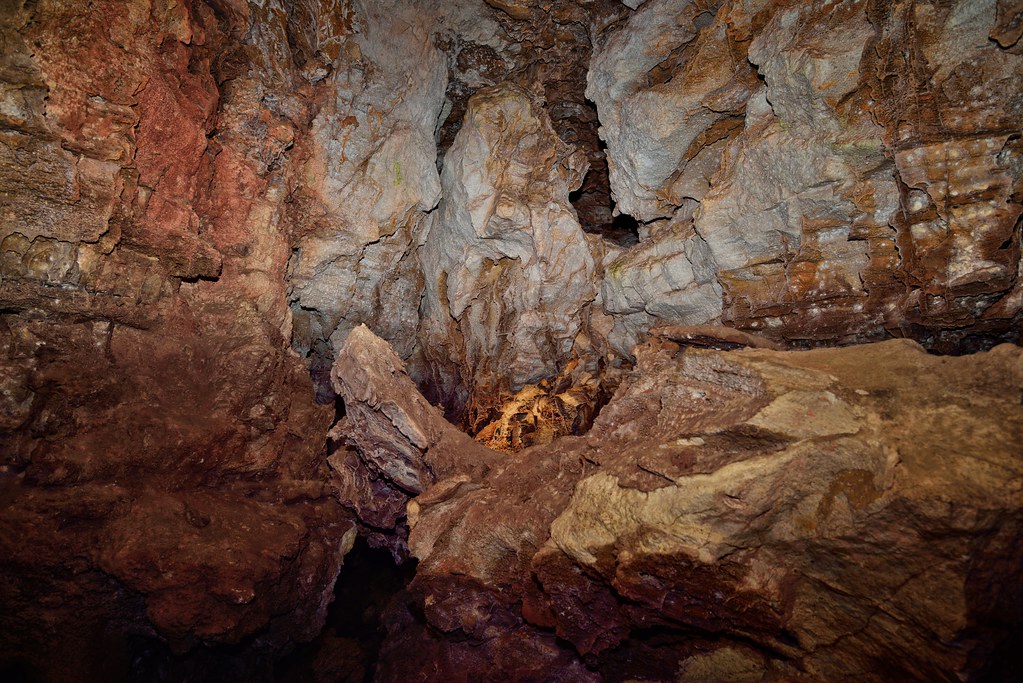#Pahá Sápa
Text
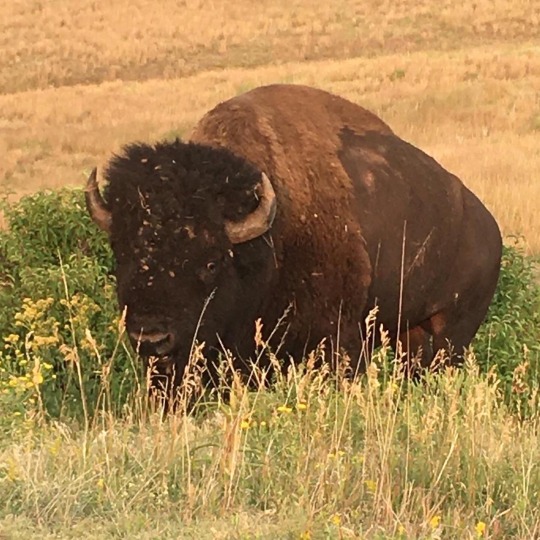


The buffalo came to make sure we were traveling in a good way 📸: @MyBrother
#wind cave national park#return of the white buffalo#buffalo#american bison#bison#tatanka#black hills#Pahá Sápa#lakota#ogala#protect the sacred#sacred space#land back#wildlife photography#landscape photography#nature photography#my photos#photography#SoDak#South Dakota#in search of crazy horse#searching for crazy horse#crazy horse#sitting bull#hunkpapa
209 notes
·
View notes
Text

The keepers of the mountain welcomed me to the Black Hills ⛅️🌲
#photographers on tumblr#photography#my photos#adventure#nature photography#vision quest#searching for crazy horse#crazy horse#caballo loco#lakota#ogala#Pahá Sápa#black hills#SoDak#sitting bull#spiritual journey#indigenous#first nations#turtle island#South Dakota#photoblog#land back#landscape photography#wind cave national park
10 notes
·
View notes
Video
Caves and Openings in Wind Cave (Wind Cave National Park) by Mark Stevens
Via Flickr:
An image captured on the ranger led Natural Entrance Cave Tour in Wind Cave National Park. After doing some initial work with white balance, saturation and contrast adjustments in Capture NX2, I exported a TIFF image to Color Efex Pro 4 and used and Open Shade recipe for the final image.
#Nikon D800E#Day 3#Trip to Dakotas and Wyoming#Trip to Dakotas#Natural Entrance Cave Tour#Capture NX2 Edited#Color Efex Pro#Wind Cave National Park#Pahá Sápa#Washun Niya#Southern Black Hills#Black Hills#Great Plains#North America Plains#Landscape#Nature#Inside Cave#Park Ranger Led Tour#Ranger Tour#Maka Oniye#Project365#Portfolio#Pah‡ S‡pa#South Dakota#United States
1 note
·
View note
Text
Native Americans Have Always Answered the Call to Serve
https://sciencespies.com/history/native-americans-have-always-answered-the-call-to-serve/
Native Americans Have Always Answered the Call to Serve
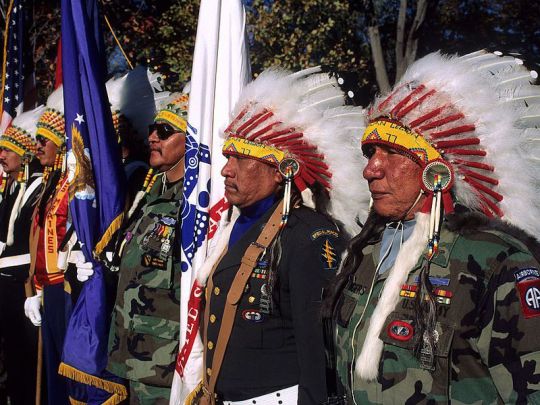
Smithsonian Voices National Museum of the American Indian
Native Americans Have Always Answered the Call to Serve: National VFW Day 2020
September 29th, 2020, 3:50PM
/ BY
Dennis Zotigh
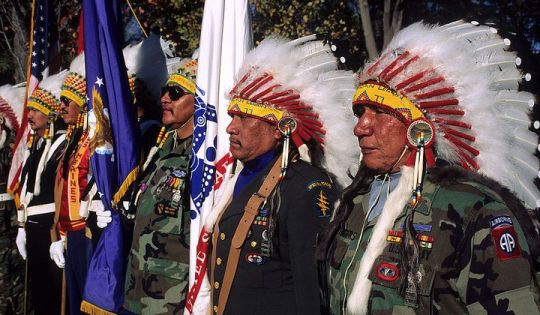
Native American veterans of the Vietnam War stand in honor as part of the color guard at the Vietnam Veterans War Memorial. November 11, 1990, Washington, D.C. (Photo by Mark Reinstein/Corbis via Getty Images)
National Veterans of Foreign Wars Day, September 29, recognizes men and women who have served honorably in a foreign war or overseas operation recognized by a campaign medal, received hostile fire, or qualified for imminent danger pay. Active-duty servicemembers who meet the criteria are also welcome. Members today include veterans of World War II, Korea, Vietnam, Lebanon, Grenada, Panama, the Balkans, the Persian Gulf, Somalia, Kosovo, Afghanistan, Iraq, and other expeditionary campaigns, as well as those who have served during occupations. Family members of eligible servicemen and women show their support through the VFW Auxiliary.
The organization’s history dates to 1899, when the American Veterans of Foreign Service and the National Society of the Army of the Philippines were organized to secure rights and benefits for veterans of the Spanish–American War (1898) and Philippine–American War (1899–1902). The two organizations merged in 1914, creating the Veterans of Foreign Wars of the United States. The VFW was chartered by Congress in 1936.
The VFW defines its role in its mission and vision statements:
To foster camaraderie among United States veterans of overseas conflicts. To serve our veterans, the military, and our communities. To advocate on behalf of all veterans.
To ensure that veterans are respected for their service, always receive their earned entitlements, and are recognized for the sacrifices they and their loved ones have made on behalf of this great country.
Today, more than 1.6 million people belong to the VFW and VFW Auxiliary. They take part in service and social programs at more than 6,000 posts, including posts on American Indian reservations and in Native communities.
In the early 1900s, the warrior tradition of American Indians seemed to face near extinction. The last of the major conflicts over Native American lands had ended a generation before, when the Agreement of 1877 annexed the Sioux homelands—including Pahá Sápa, the Black Hills—and permanently established Indian reservations. With a handful of exceptions, Native warriors no longer engaged in battle to protect their homes, families, and way of life.
“Native Americans served in World War I even though they were not citizens of the United States.” —Kevin Gover (Pawnee), director of the National Museum of the American Indian
That changed in 1917, when the United States formally entered World War I. In need of a much larger military, the federal government began to promote enlistment, and shortly afterward, instituted the draft. It is estimated that more than 12,000 American Indians served in the U.S. military during the war. At a time when a third of Native Americans were not recognized as citizens of the United States, more than 17,000 Native American men registered with the Selective Service. An estimated 12,000 Native Americans joined the U.S. Armed Forces, some 6,500 of whom were drafted, according to the records of the U.S. Office of Indian Affairs
The largest group of Native service members came from Oklahoma. Members of the Choctaw Nation of Oklahoma became the military’s first officially organized and trained group of American Indian code talkers. Students of the federal Indian boarding schools volunteered in large numbers—more than 200 from the Carlisle Indian School alone. Native Americans joined every branch of the military, including a number of Native women who volunteered for the Army Nurse Corps. Unlike African American servicemen and women, Native Americans were not segregated into special units, although there is evidence that they were often given unusually dangerous assignments. About 5 percent of Native combat soldiers were killed during World War I, compared to 1 percent of American soldiers overall.
Through the Citizenship Act of 1919, Congress granted U.S. citizenship to American Indians who had served, if they applied for it. Native Americans’ record of patriotism became the catalyst for the broader Indian Citizenship Act of 1924, which recognized all Native Americans born in the United States as citizens.
The United States’ entry into World War II brought large numbers of American Indian warriors back to the battlefield in defense of their homeland. More than 44,000 American Indians, out of a total Native American population of less than 400,000, served with distinction between 1941 and 1945 in all theaters of the war. Servicemen from more than 30 Native nations used their tribal languages as unbreakable codes to transmit vital communications. Among many Native heroes of the war is Ira Hayes (Pima [Akimel O’odham], who grew up on his parents’ farm in the Gila River Indian Community, Arizona; enlisted in the Marine Corps Reserve in 1942; and was one of six servicemen who raised the American flag over Iwo Jima, a moment immortalized at the Marine Corps Memorial.
“There is a camaraderie that transcends ethnicity when you serve your country overseas in wartime.”—Senator Ben Nighthorse Campbell (Northern Cheyenne), Korea veteran
During the Korean War (1950–1953), battle-hardened Native American troops from World War II were joined by American Indians newly recruited to fight on foreign soil. Approximately 10,000 Native Americans served in the U.S. military during this period. Seven American Indians and Native Hawaiians received Medals of Honor for their bravery and sacrifice in Korea. My uncle, William Hall-Zotigh (Kiowa), proudly served in a MASH unit near Inchon and Taegu. Before his death, he was heavily involved in the Veterans of Foreign Wars and presided over funerals for veterans on behalf of the VFW.

Native American veterans participate in opening ceremonies during the 7th Annual Indiana Traditional Powwow. April 7, 2018, Indiana University, Bloomington, Indiana. (Jeremy Hogan)
Native Americans demonstrated their patriotism again during the Vietnam era. More than 42,000 Native Americans, fought in Vietnam, more than 90 percent of them volunteers. Among the nearly 60 thousand names of individuals killed or missing in action on the Vietnam Memorial Wall are 232 identified as Native Americans or Alaska Natives.
During the 1980s and 1990s, Natives in United States military took part in combat or other hostilities in Grenada, Panama, Somalia, Bosnia and Kosovo, the Persian Gulf, Afghanistan, and Iraq. Private First Class Lori Piestewa (Hopi) was the first woman killed in action during Operation Iraqi Freedom and the first American Indian woman known to have died in combat overseas.
“I’m excited about the upcoming memorial. With the all-volunteer service, there are a lot of people who have not served or don’t understand what it means to serve. I guess I want people to recognize how often Native people have volunteered. From Alaska to the East Coast, through all the wars, Native people have always volunteered.” —Colonel Wayne Don (Cupig and Yupik), veteran of Bosnia and Afghanistan
According to the Department of Defense, more than 23,000 of the 1.2 million men and women on active duty in the U.S. military today American Indians or Alaska Natives. With the completion of the National Native American Veterans Memorial on November 11, 2020, the museum will honor them and all Native veterans. The museum will announce the larger, ceremonial opening when it is possible for veterans and their families to take part.
The National Native American Veterans Memorial is currently under construction on the grounds of the National Museum of the American Indian on the National Mall in Washington, D.C. Congress charged the museum with creating this memorial to give all Americans the opportunity “to learn of the proud and courageous tradition of service of Native Americans.” Their legacy deserves our recognition.
Join us in recognizing the members and mission of the VFW on social media using the hashtag #VFWDay.
Dennis W. Zotigh (Kiowa/San Juan Pueblo/Santee Dakota Indian) is a member of the Kiowa Gourd Clan and San Juan Pueblo Winter Clan and a descendant of Sitting Bear and No Retreat, both principal war chiefs of the Kiowas. Dennis works as a writer and cultural specialist at the Smithsonian National Museum of the American Indian in Washington, D.C.
More From This Author »
#History
2 notes
·
View notes
Photo



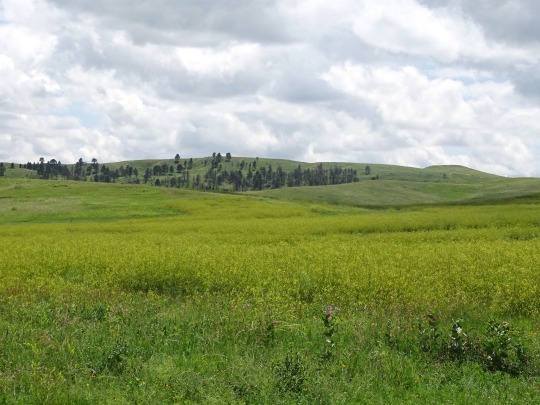

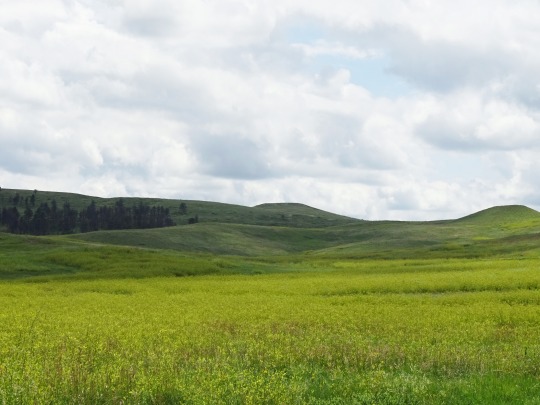

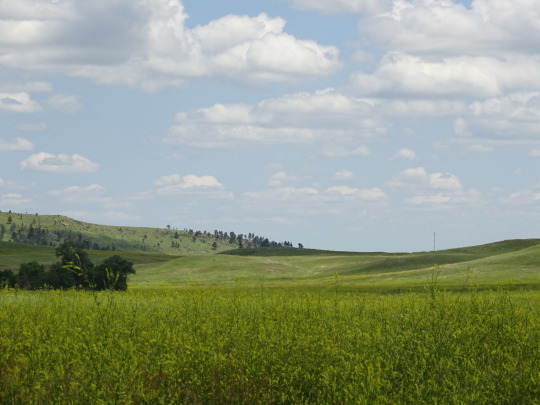

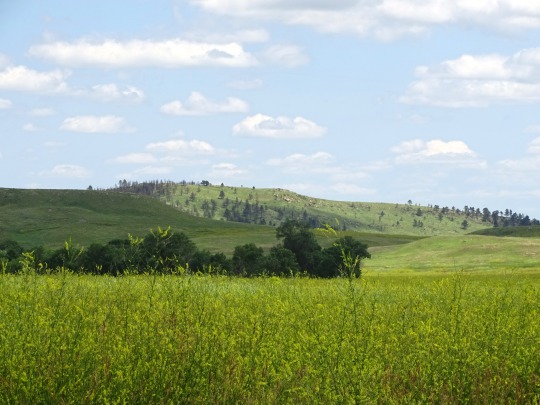
Custer State Park, SD (No. 5)
The Black Hills (Lakota: Ȟe Sápa; Cheyenne: Moʼȯhta-voʼhonáaeva; Hidatsa: awaxaawi shiibisha) are a small and isolated mountain range rising from the Great Plains of North America in western South Dakota and extending into Wyoming, United States. Black Elk Peak (formerly known as Harney Peak), which rises to 7,244 feet (2,208 m), is the range's highest summit. The Black Hills encompass the Black Hills National Forest. The name "Black Hills" is a translation of the Lakota Pahá Sápa. The hills were so-called because of their dark appearance from a distance, as they were covered in trees.
Native Americans have a long history in the Black Hills. After conquering the Cheyenne in 1776, the Lakota stole the territory of the Black Hills, which became central to their culture. In 1868, the U.S. government signed the Fort Laramie Treaty of 1868, establishing the Great Sioux Reservation west of the Missouri River, and exempting the Black Hills from all white settlement forever. However, when settlers discovered gold there in 1874, as a result of George Armstrong Custer's Black Hills Expedition, miners swept into the area in a gold rush. The US government took back the Black Hills and in 1889 reassigned the Lakota, against their wishes, to five smaller reservations in western South Dakota, selling off 9 million acres of their former land. Unlike most of South Dakota, the Black Hills were settled by European Americans primarily from population centers to the west and south of the region, as miners flocked there from earlier gold boom locations in Colorado and Montana.
As the economy of the Black Hills has shifted from natural resources (mining and timber) since the late 20th century, the hospitality and tourism industries have grown to take its place. Locals tend to divide the Black Hills into two areas: "The Southern Hills" and "The Northern Hills". The Southern Hills is home to Mount Rushmore, Wind Cave National Park, Jewel Cave National Monument, Black Elk Peak (the highest point in the United States east of the Rockies, formerly and still more commonly known as Harney Peak), Custer State Park (the largest state park in South Dakota), the Crazy Horse Memorial, and the Mammoth Site in Hot Springs, the world's largest mammoth research facility.
Attractions in the Northern Hills include Spearfish Canyon, historic Deadwood, and the Sturgis Motorcycle Rally, held each August. The first Rally was held on August 14, 1938 and the 75th Rally in 2015 saw more than 1 million bikers visit the Black Hills. Devils Tower National Monument, located in the Wyoming Black Hills, is an important nearby attraction and was the United States' first national monument.
Source: Wikipedia
#Custer State Park#Black Hills#nature#flora#landscape#countryside#USA#one of my favorite parks#cowboy country#big sky country#yellow flower#tree#woods#forest#prairie#grass#meadow#ponderosa pine-studded hills#South Dakota#Midwestern USA#Melilotus officinalis#yellow melilot#yellow sea#light and shadow#blooming
9 notes
·
View notes
Video
youtube
Day 291 - Composer Submission
Excerpt from Pahá Sápa by Michaels Stephens
12 notes
·
View notes
Text
The Black Hills of Dakota
The Black Hills of Dakota
The Black Hills of Dakota refers to the Black Hills that can be found in South Dakota.
Black Hills of South Dakota
Wikipedia describes the Black Hills as ” are a small, isolated mountain range rising from the Great Plains of North America in western South Dakota and extending into Wyoming…The name “Black Hills” is a translation of the Lakota Pahá Sápa. The hills were so-called because of their…
View On WordPress
#Doris Day#Paul Franics Webster#Sammy Fain#songs about South Dakota#songs about the states#The Black Hills of Dakota song story
0 notes
Video
Lighting Up the Ceiling and Caves of Wind Cave National Park by Mark Stevens
Via Flickr:
An image captured on the ranger led Natural Entrance Cave Tour in Wind Cave National Park. After doing some initial work in Aurora HDR Pro, I exported a TIFF to Capture NX2 to work with white balance, saturation and contrast adjustments in Capture NX2. I then worked with that TIFF image in Color Efex Pro 4 and used and Open Shade recipe for the final image.
#Nikon D800E#Day 3#Trip to Dakotas and Wyoming#Trip to Dakotas#Natural Entrance Cave Tour#Capture NX2 Edited#Color Efex Pro#Wind Cave National Park#Pahá Sápa#Washun Niya#Southern Black Hills#Black Hills#Great Plains#North America Plains#Landscape#Nature#Inside Cave#Park Ranger Led Tour#Ranger Tour#Boxwork#Honeycomb Pattern#Aurora HDR#Aurora HDR Pro#HDR#Single Image HDR#Maka Oniye#Project365#Portfolio#South Dakota#United States
1 note
·
View note
Video
Walking Through More Cave Openings and Passages in Wind Cave on the Natural Entrance Cave Tour by Mark Stevens
#Nikon D800E#Day 3#Trip to Dakotas and Wyoming#Trip to Dakotas#Natural Entrance Cave Tour#Color Efex Pro#Wind Cave National Park#Pahá Sápa#Washun Niya#Southern Black Hills#Black Hills#Great Plains#North America Plains#Landscape#Nature#Inside Cave#Park Ranger Led Tour#Ranger Tour#Boxwork#Honeycomb Pattern#Aurora HDR#Aurora HDR Pro#HDR#Single Image HDR#Maka Oniye#Project365#South Dakota#United States
0 notes
Video
The Needles Eye (Custer State Park) by Mark Stevens
Via Flickr:
A granite rock formation and spire with with an amazing structure and look carved by nature over the eons of time (billions of years old according to a nearby sign). Here I went with a portrait orientation to capture its sheer size and wonder. I could have pulled back but the overcast skies gave a nice tonal contrast that seemed to best bring out the details in this granite spire.
#Azimuth 222#Black Hills#Capture NX2 Edited#Cloudy#Color Efex Pro#Custer State Park#Eroded Granite Spires#Eroded Granite Towers#Great Plains#Landscape#Looking SW#Nature#Needles Highway#Nikon D800E#North America Plains#Outside#Overcast#Pahá Sápa#Project365#SD Hwy 87#South Dakota Hwy 87#Southern Black Hills#Spires#The Needles#The Needles Eye#South Dakota#United States
0 notes
Video
Aspens in Bloom in the Black Hills by Mark Stevens
Via Flickr:
A roadside stop where I was able to capture this view to some aspens just off the highway. I later cropped portions so that it focused only on those trees I saw that late morning.
#Along Roadside#Aspen Trees#Aspens#Azimuth 194#Black Hills#Black Hills National Forest#Capture NX2 Edited#Color Efex Pro#Day 9#Great Plains#Landscape#Looking South#Nature#Nikon D800E#North America Plains#Off Side of Road#Outside#Pahá Sápa#Project365#Roadside Pulloff#Side of Road#Southern Black Hills#Standing on Side of Road#Trees#Trip to Dakotas#Trip to Dakotas and Wyoming#U.S. Route 16A#US 16A#South Dakota#United States
0 notes
Video
Caves and Openings in Wind Cave (Wind Cave National Park) by Mark Stevens
Via Flickr:
An image captured on the ranger led Natural Entrance Cave Tour in Wind Cave National Park. After doing some initial work with white balance, saturation and contrast adjustments in Capture NX2, I exported a TIFF image to Color Efex Pro 4 and used and Open Shade recipe for the final image.
#Nikon D800E#Day 3#Trip to Dakotas and Wyoming#Trip to Dakotas#Natural Entrance Cave Tour#Capture NX2 Edited#Color Efex Pro#Wind Cave National Park#Pahá Sápa#Washun Niya#Southern Black Hills#Black Hills#Great Plains#North America Plains#Landscape#Nature#Inside Cave#Park Ranger Led Tour#Ranger Tour#Maka Oniye#Project365#Portfolio#Pah‡ S‡pa#South Dakota#United States
0 notes
Video
A Communicative Prairie Dog in Custer State Park by Mark Stevens
Via Flickr:
So after spending some time watching a herd of bison in the state park, I continued on the Wildlife Loop Road, intending to enjoy a hike or two in Wind Cave National Park. But before I got there, I came across my first sighting of a prairie dog town and decided to spend a few moments listening and even "talking" the prairie dogs out in this field. For this and a few other images, I pulled out a Tamron 150-600mm lens and used it to zoom in to this one mound and prairie dog. I later used Capture NX2 for some post-processing work with color, contrast and saturation. In order to bring more focus to the prairie dog, I decided to use a Lighten/Darken CEP filter for the final image.
#Along Roadside#Azimuth 223#Black Hills#Canvas#Capture NX2 Edited#Color Efex Pro#Custer State Park#Cynomys ludovicianus#Grassy Area#Grassy Field#Grassy Meadow#Great Plains#Landscape#Looking SW#Meadows#Nature#Nikon D800E#North America Plains#Outside#Pahá Sápa#Portfolio#Prairie Dog#Prairie Dog Town#Project365#Roadside Pulloff#Southern Black Hills#Wildlife Loop#Wildlife Loop Road#Wildlife Loop State Scenic Byway#South Dakota
0 notes
Video
Flowers on Display (Wind Cave National Park) by Mark Stevens
Via Flickr:
One of the first things I came across just outside the elevator exit at the end of the Natural Entrance Cave Tour in Wind Cave National Park. I then worked angles and the focal length to capture as much of these plants in the image as well as in focus.
#Azimuth 71#Black Hills#Blooming#Capture NX2 Edited#Color Efex Pro#Day 3#Great Plains#In Bloom#Landscape#Looking NE#Natural Entrance Cave Tour#Nature#Nikon D800E#North America Plains#Outside#Pahá Sápa#Project365#Southern Black Hills#Tree in Bloom#Trip to Dakotas#Trip to Dakotas and Wyoming#Washun Niya#White Flowers#Wind Cave National Park#South Dakota#United States
0 notes
Video
Flowering Plants and Trees Along a Hiking Trail (Wind Cave National Park) by Mark Stevens
Via Flickr:
A spot about a mile or so into the Wind Cave Canyon Trail. With the plant-life all around and some with colorful white and yellow-green buds, it seemed a picturesque setting. Given the overcast skies above, I made a point to compose the image and minimize those skies, focusing on the plants and nearby hillside. The red-browns of the soil wound up being a great color contrast to the nearby plant-life. I later used a Pro Contrast and Skylight CEP filter in Capture NX2 for the final image to address what I felt was the more muted colors from the overcast skies above.
#Azimuth 132#Black Hills#Capture NX2 Edited#Color Efex Pro#Day 3#Flowering Plants#Grassy Area#Great Plains#Hillside of Trees#In Bloom#Landscape#Looking SE#Nature#Nikon D800E#North America Plains#Outside#Overcast#Pahá Sápa#Plants in Bloom#Portfolio#Project365#Rolling Hillsides#Southern Black Hills#Trees#Trip to Dakotas#Trip to Dakotas and Wyoming#Washun Niya#Wind Cave Canyon Trail#Wind Cave National Park#South Dakota
0 notes
